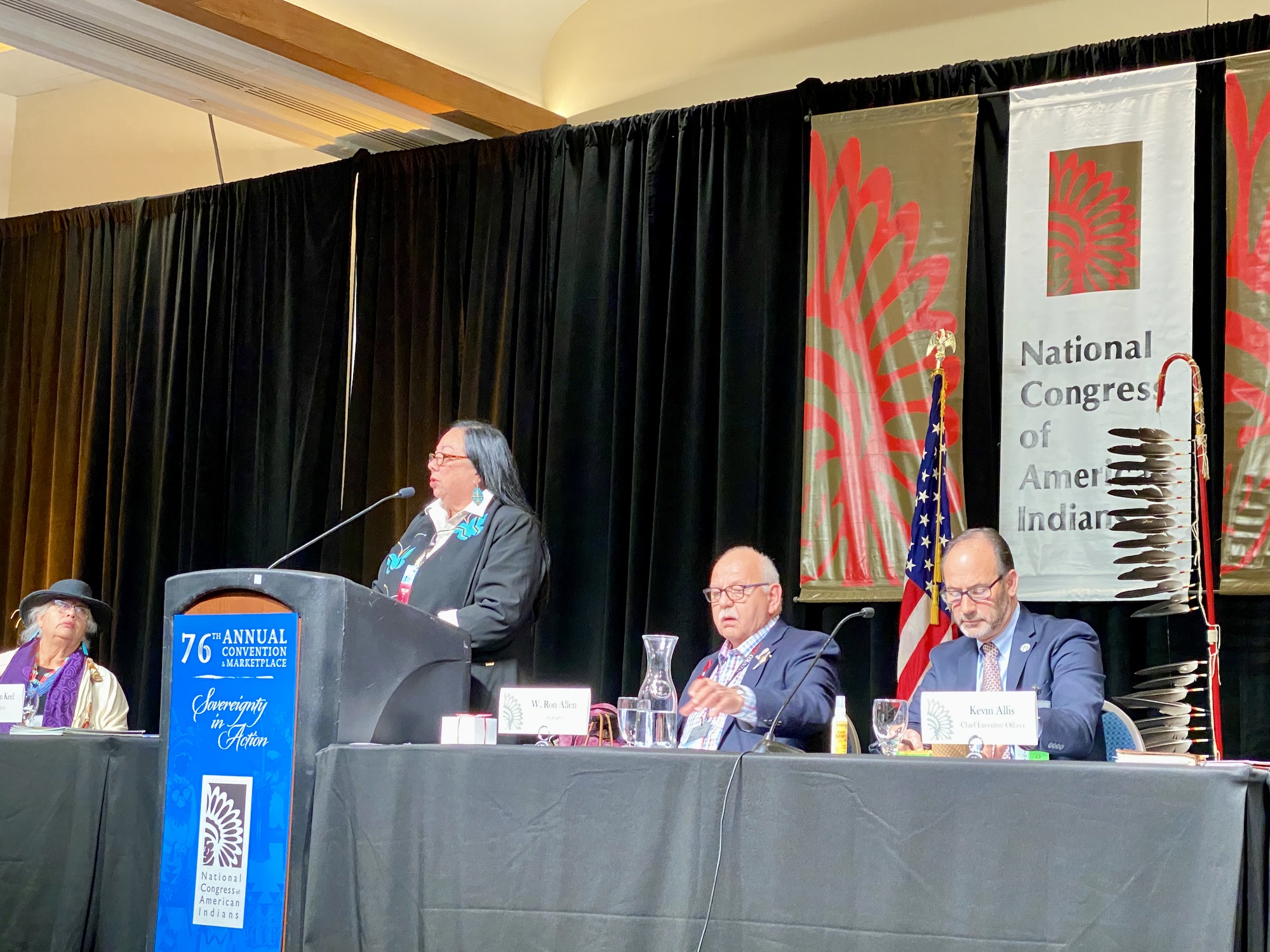• CONGRESS.GOV: S.943, the Johnson-O’Malley Supplemental Indian Education Program Modernization Act Slowly but surely, the Trump administration is working to modernize the popular Johnson O'Malley Program for Indian students. The program helps pay for a wide range of initiatives, from school supplies and learning competitions to field trips and powwows, for Indian students across the nation. But funding levels have been stuck at 1995, despite rises in costs and growth in tribal populations. Thanks to a new federal law that tribes, Indian educators and supporters in Congress fought for, the situation is finally changing. The Johnson-O’Malley Supplemental Indian Education Program Modernization Act requires the Bureau of Indian Affairs to update the student count for the modern era. "An accurate count of eligible students is the first critical step to advocating for adequate JOM funding across the country," Marita Hinds, a citizen of the Pueblo of Tesuque who serves as president of the National Indian Education Association, said during the National Congress of American Indians 76th annual convention last month.

Wilson War Ponies – 2019 Elementary Wilbur Chebon Gouge Honors Team winners!
Posted by Muscogee Creek Nation Johnson O' Malley Program on Friday, March 15, 2019
So what's next? Indian Country has until December 30 to provide comments about the preliminary report, according to an October 29 notice in the Federal Register. The December 30 deadline is close to the December 31 deadline imposed by Congress on the BIE. A "final" report is supposed to be due on the latter date. In addition to engaging in consultations for an update student count, the Trump administration has proposed a new JOM rule. The comment period closed on August 26. A final rule hasn't been released.Mark Cruz, Deputy Assistant Secretary-Indian Affairs for Policy & Economic Development, @Interior, visited #CherokeeNation to see economic development projects, tour @SeqActivities & the Cherokee Immersion School, & participate in a tribal gathering to discuss JOM modernization. pic.twitter.com/ij5JCdKhM5
— CherokeeNation (@CherokeeNation) July 19, 2019
Federal Register Notices
Johnson-O'Malley Program; Preliminary Report
(October 29, 2019)Education Contracts Under Johnson-O'Malley Act (June 27, 2019)
Johnson-O'Malley Program (May 22, 2019)
Join the Conversation
Related Stories
Native
Sun News Today: Johnson-O'Malley program finally in line for an update
(August 23, 2019) Trump administration opens consultation on Indian education update (May 21, 2019)
Bill John Baker: Indian students will finally be counted thanks to new law (January 18, 2019)
Congress sends more Indian Country bills to President Trump (December 11, 2018)
Bill John Baker: Johnson-O'Malley education program needs full funding (May 2, 2018)
Bureau of Indian Affairs strips blood quantum from proposed Johnson O'Malley rule (March 23, 2018)
Senate committee advances bill to update Johnson O'Malley education program (October 4, 2017)
Senate Committee on Indian Affairs set to advance Johnson O'Malley reform bill (October 2, 2017)
Senate Committee on Indian Affairs takes testimony on three bills at hearing (July 12, 2017)
Senate Committee on Indian Affairs adds another hearing to July schedule (June 29, 2017)
Tribes and educators push for newer data for key funding program (May 10, 2016)
Witness list for Senate Committee on Indian Affairs hearing on two bills (May 9, 2016)
Senate Committee on Indian Affairs schedules meeting and hearing (May 5, 2016)
BIE schedules consultations for Johnson-O'Malley program (November 16, 2015)
Carla Mann: Act now for accurate Indian student count for JOM (August 4, 2014)
Carla Mann: Johnson O'Malley needs an accurate student count (July 16, 2014)

